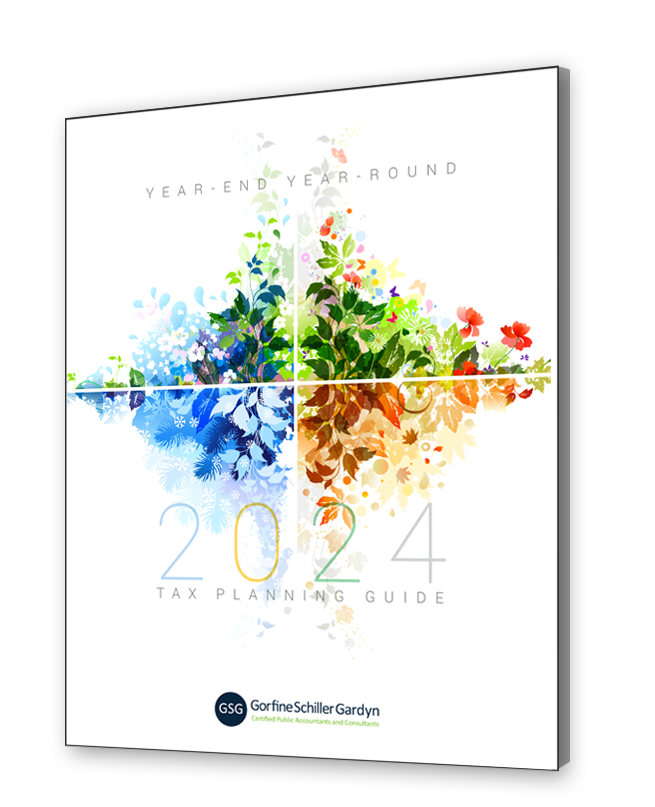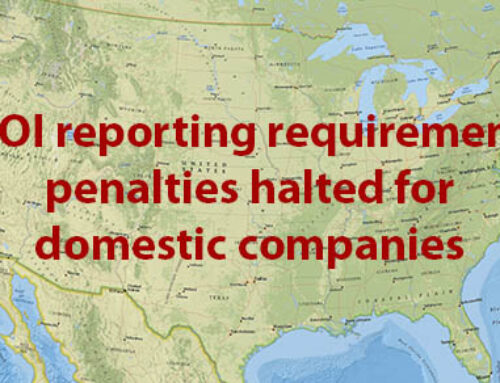The IRS has issued new guidance providing transitional relief related to recent legislative changes to the age at which taxpayers must begin taking required minimum distributions (RMDs) from retirement accounts. The guidance in IRS Notice 2023-54 also extends relief already granted to taxpayers covered by the so-called “10-year rule” for inherited IRAs and other defined contribution plans.
The need for RMD relief
In late 2019, the Setting Every Community Up for Retirement Enhancement (SECURE) Act brought numerous changes to the retirement and estate planning landscape. Among other things, it generally raised the age at which retirement account holders must begin to take their RMDs. The required beginning date (RBD) for traditional IRAs and other qualified plans was raised from age 70½ to 72.
Three years later, in December 2022, the SECURE 2.0 Act increased the RBD age for RMDs further. This year the age increased to 73, and it’s scheduled to climb to 75 in 2033.
The RBD is defined as April 1 of the calendar year following the year in which an individual reaches the applicable age. Therefore, an IRA owner who was born in 1951 will have an RBD of April 1, 2025, rather than April 1, 2024. The first distribution made to the IRA owner that will be treated as a taxable RMD will be a distribution made for 2024.
While the delayed onset of RMDs is largely welcome news from an income tax perspective, it has caused some confusion among retirees and necessitated updates to plan administrators’ automatic payment systems. For example, retirees who were born in 1951 and turn 72 this year may have initiated distributions this year because they were under the impression that they needed to start taking RMDs by April 1, 2024.
Administrators and other payors also voiced concerns that the updates could take some time to implement. As a result, they said, plan participants and IRA owners who would’ve been required to start receiving RMDs for calendar year 2023 before SECURE 2.0 (that is, those who reach age 72 in 2023) and who receive distributions in 2023 might have had those distributions mischaracterized as RMDs. This is significant because RMDs aren’t eligible for a tax-free rollover to an eligible retirement plan, so the distributions would be includible in gross income for tax purposes.
The IRS response
To address these concerns, the IRS is extending the 60-day deadline for rollovers of distributions that were mischaracterized as RMDs due to the change in the RBD from age 72 to age 73. The deadline for rolling over such distributions made between January 1, 2023, and July 31, 2023, is now September 30, 2023.
For example, if a plan participant born in 1951 received a single-sum distribution in January 2023, and part of it was treated as ineligible for a rollover because it was mischaracterized as an RMD, the plan participant will have until the end of September to roll over that portion of the distribution. If the deadline passes without the distribution being rolled over, the distribution will then be considered taxable income.
The rollover also applies to mischaracterized IRA distributions made to an IRA owner (or surviving spouse). It applies even if the owner or surviving spouse rolled over a distribution within the previous 12 months, although the subsequent rollover will preclude the owner or spouse from doing another rollover in the next 12 months. (The individual could still make a direct trustee-to-trustee transfer.)
Plan administrators and payors receive some relief, too. They won’t be penalized for failing to treat any distribution made between January 1, 2023, and July 31, 2023, to a participant born in 1951 (or that participant’s surviving spouse) as an eligible rollover distribution if the distribution would’ve been an RMD before SECURE 2.0’s change to the RBD.
The 10-year rule conundrum
Prior to the enactment of the original SECURE Act, beneficiaries of inherited IRAs could “stretch” the RMDs on the accounts over their entire life expectancies. The stretch period could run for decades for younger heirs, allowing them to take smaller distributions and defer taxes while the accounts grew. These heirs then had the option to pass their IRAs to later generations, potentially deferring tax payments even longer.
To accelerate tax collection, the SECURE Act eliminated the rules permitting stretch RMDs for many heirs (referred to as designated beneficiaries, as opposed to eligible designated beneficiaries, or EDBs). For IRA owners or defined contribution plan participants who died in 2020 or later, the law generally requires that the entire balance of the account be distributed within 10 years of death. The rule applies regardless of whether the deceased dies before, on or after the RBD for RMDs from the plan. (EDBs may continue to stretch payments over their life expectancies or, if the deceased died before the RBD, may elect the 10-year rule treatment.)
According to proposed IRS regulations released in February 2022, designated beneficiaries who inherit an IRA or defined contribution plan before the deceased’s RBD can satisfy the 10-year rule by taking the entire sum before the end of the calendar year that includes the 10-year anniversary of the death. Notably, though, if the deceased dies on or after the RBD, designated beneficiaries would be required to take taxable annual RMDs (based on their life expectancies) in years one through nine, receiving the remaining balance in year 10. They can’t wait until the end of 10 years and take the entire account as a lump-sum distribution. The annual RMD rule would provide designated beneficiaries less tax-planning flexibility and could push them into higher tax brackets during those years, especially if they’re working.
The 10-year rule and the proposed regs left many designated beneficiaries who recently inherited IRAs or defined contribution plans bewildered as to when they needed to begin taking RMDs. For example, the IRS heard from heirs of deceased family members who died in 2020. These heirs hadn’t taken RMDs in 2021 and were unsure whether they were required to take them in 2022.
In recognition of the lingering questions, the IRS previously waived enforcement against taxpayers subject to the 10-year rule who missed 2021 and 2022 RMDs if the plan participant died in 2020 on or after the RBD. It also excused missed 2022 RMDs if the participant died in 2021 on or after the RBD. The latest guidance extends that relief by excusing 2023 missed RMDs if the participant died in 2020, 2021 or 2022 on or after the RBD.
The relief means covered individuals needn’t worry about being hit with excise tax equal to 25% of the amounts that should’ve been distributed but weren’t (or 10% if the failure to take the RMD is corrected in a timely manner). And plans won’t be penalized for failing to make an RMD in 2023 that would be required under the proposed regs.
Final regulations are pending
The IRS also announced in the guidance that final regulations related to RMDs will apply for calendar years no sooner than 2024. Previously, the agency had said final regulations would apply no earlier than 2023. We’ll let you know when the IRS publishes the final regulations and how they may affect you. Contact us with any questions.
Newsletter Sign Up
Tax Planning Guide
Recent Blog Posts










